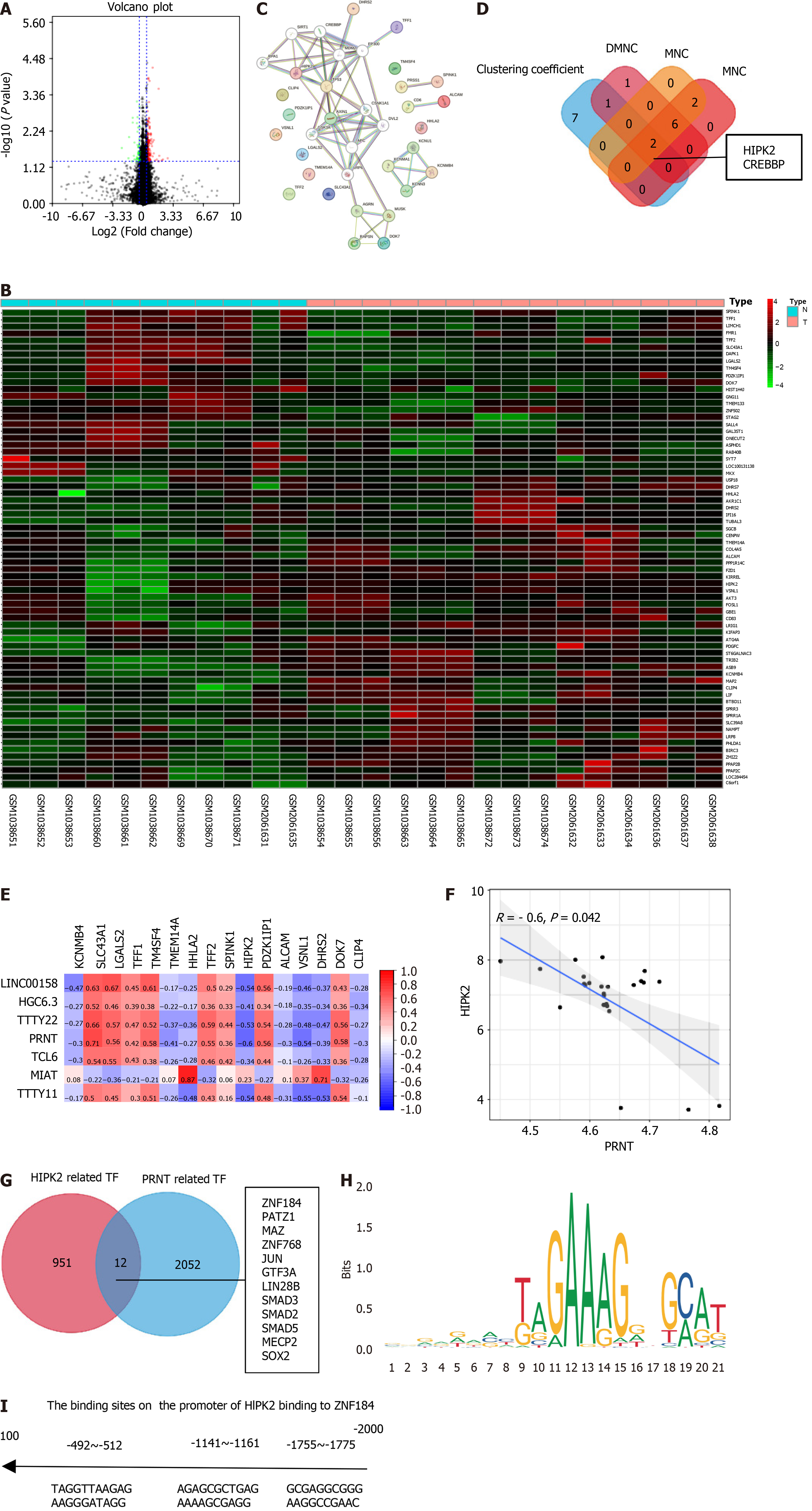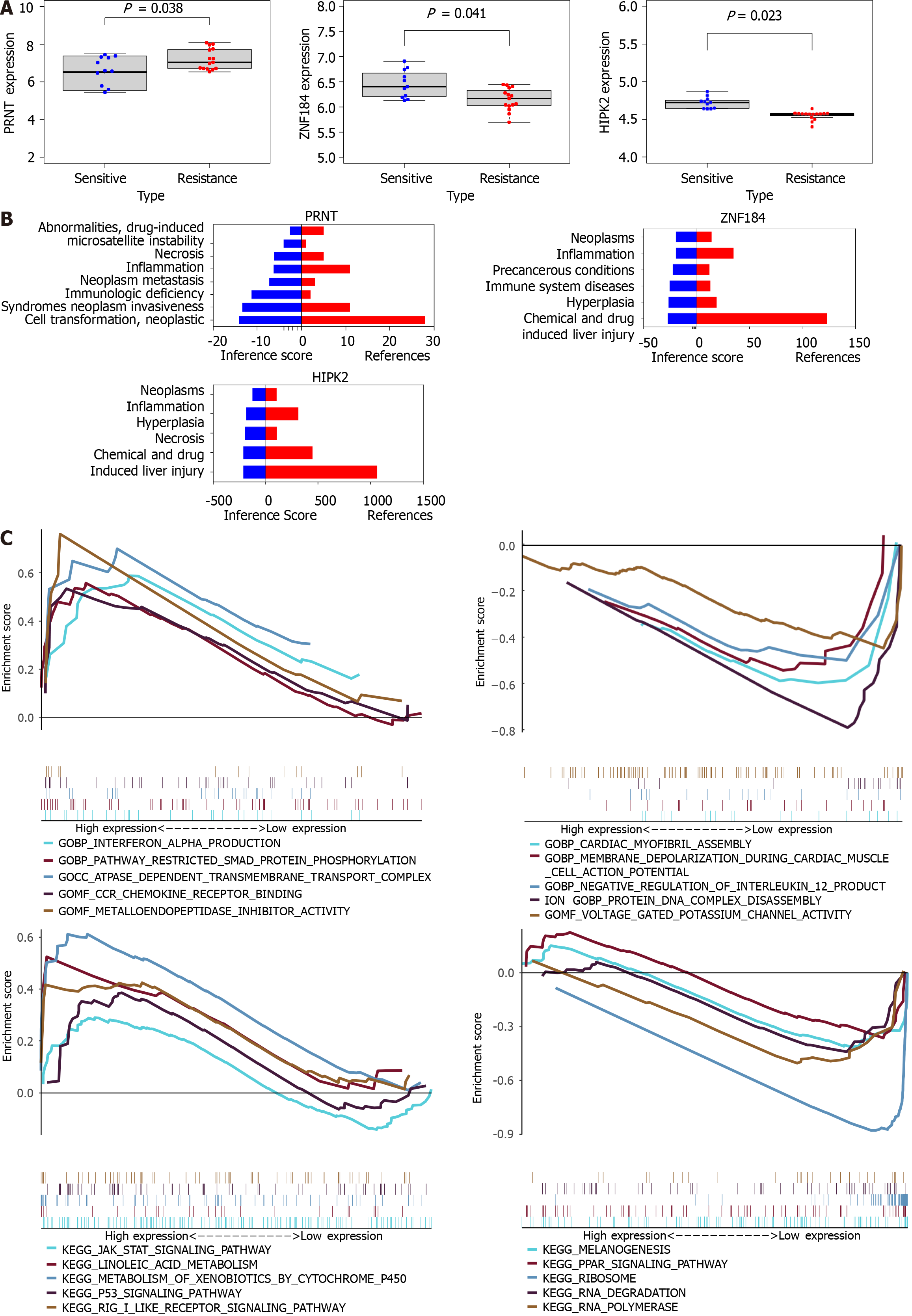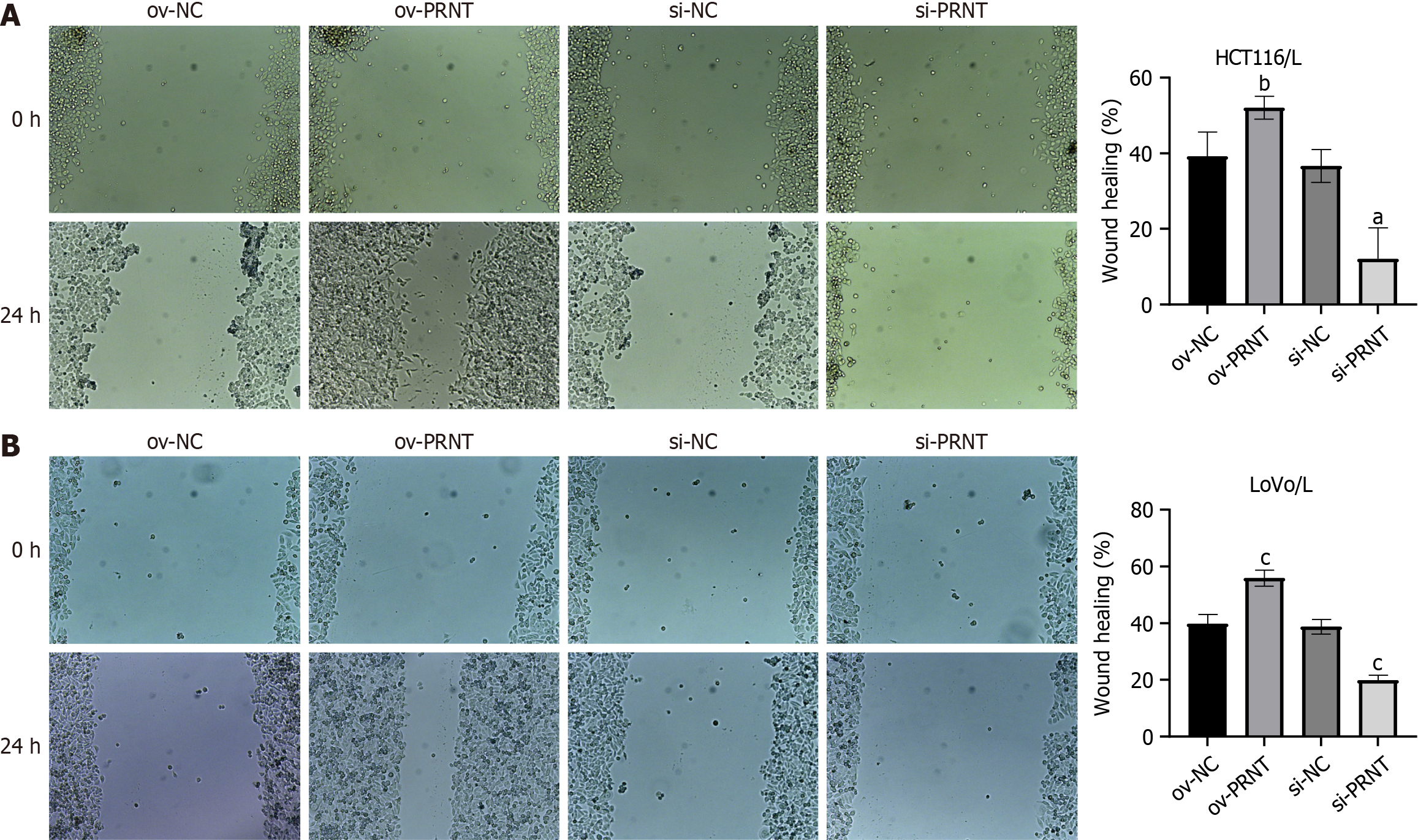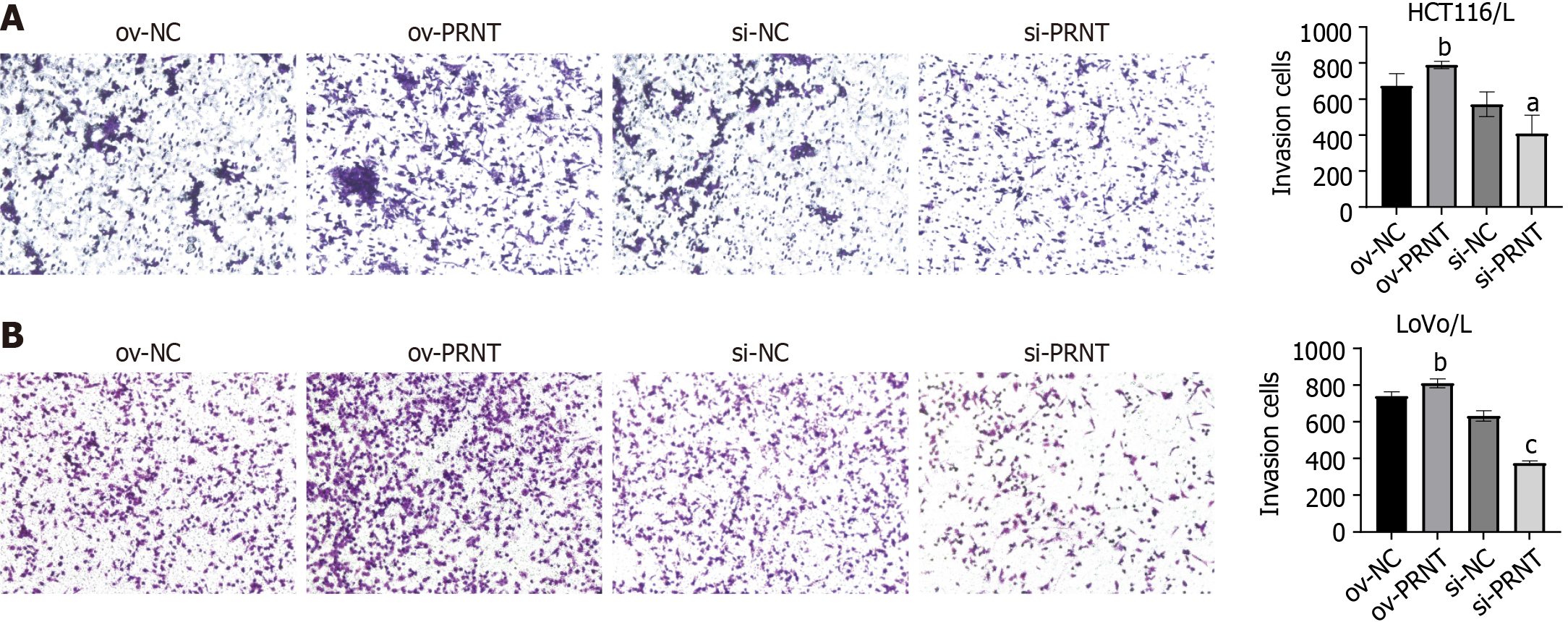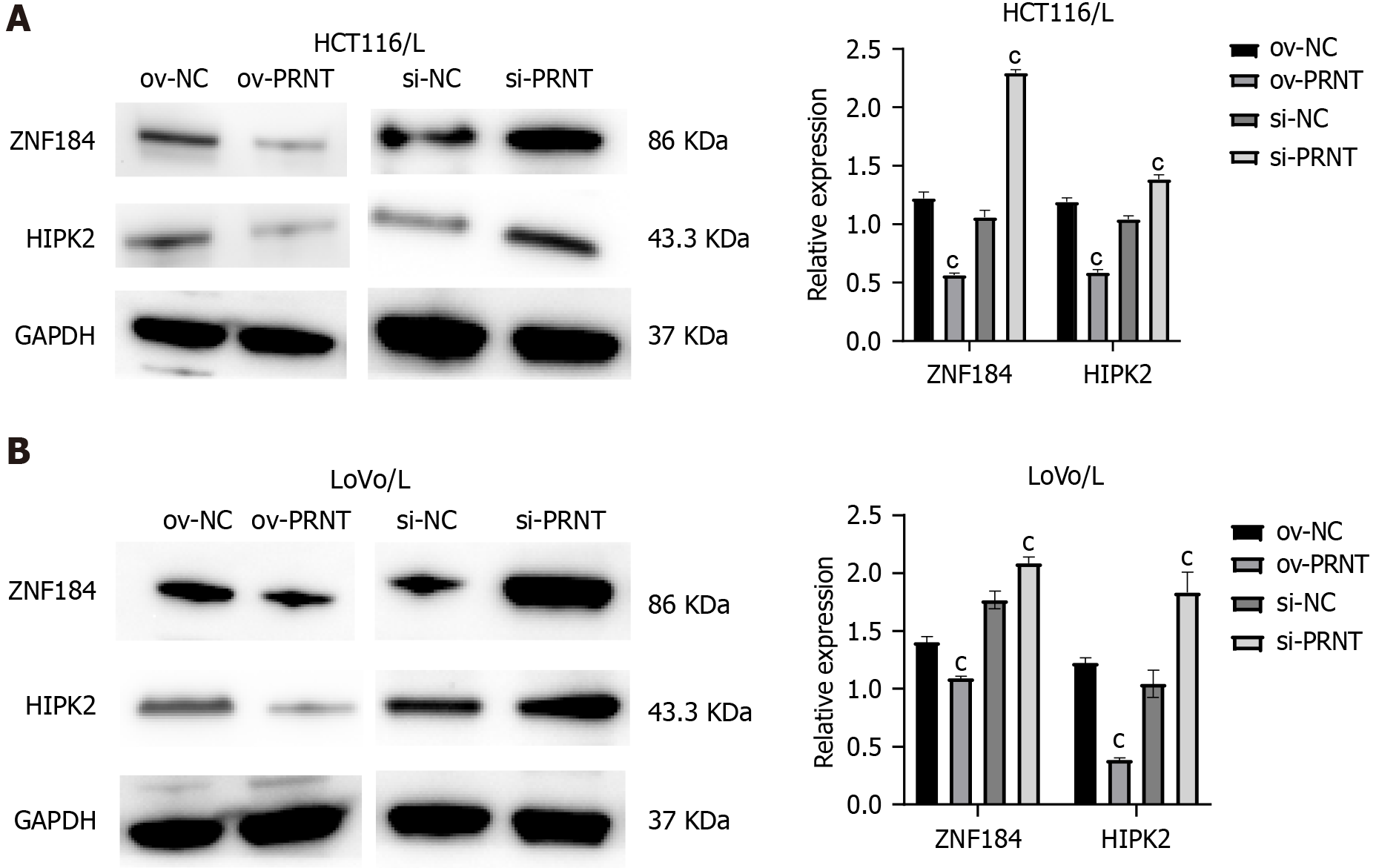Copyright
©The Author(s) 2024.
World J Gastrointest Oncol. Apr 15, 2024; 16(4): 1564-1577
Published online Apr 15, 2024. doi: 10.4251/wjgo.v16.i4.1564
Published online Apr 15, 2024. doi: 10.4251/wjgo.v16.i4.1564
Figure 1 Differential expression analysis of oxaliplatin resistance-related genes in the Gene Expression Omnibus database.
A: Volcano plot of the oxaliplatin resistance-related genes showing differential expression between oxaliplatin-sensitive and oxaliplatin-resistant groups; B: Heatmap of oxaliplatin resistance-related genes; C: Protein-protein interaction of oxaliplatin resistance-related genes; D: Hub genes of the oxaliplatin resistance-related genes; E: Heatmap of the correlation between oxaliplatin resistance-related genes and long noncoding RNAs; F: Scatter plot of the correlation between prion protein testis specific (PRNT) and homeodomain interacting protein kinase 2 (HIPK2); G: Venn plot of PRNT-related TFs and HIPK2-related TFs; H: Canonical ZNF184 binding motif via Joint Analysis of the Structural Parameters of Analytical Regulation (JASPAR); I: The binding sites of HIPK2 and ZNF184 predicted via JASPAR. PRNT: Prion protein testis specific; ZNF184: Zinc finger protein 184; HIPK2: Homeodomain interacting protein kinase 2.
Figure 2 Correlation analysis of the prion protein testis specific/zinc finger protein 184/homeodomain interacting protein kinase 2 regulatory axis.
A: Box diagram of prion protein testis specific (PRNT)/zinc finger protein 184 (ZNF184)/homeodomain interacting protein kinase 2 (HIPK2) in Gene Expression Omnibus datasets; B: Comparative Toxicogenomics database analysis of PRNT/ZNF184/HIPK2; C: Functional enrichment analysis of PRNT via gene set enrichment analysis. PRNT: Prion protein testis specific; ZNF184: Zinc finger protein 184; HIPK2: Homeodomain interacting protein kinase 2.
Figure 3 The expression of prion protein testis specific in cell lines.
A: The expression of prion protein testis specific (PRNT) in HCT116, HCT116/L, LoVo and LoVo/L cell lines; B: Nuclear cytoplasmic distribution of PRNT in the HCT116/L cell line; C: Validation of PRNT overexpression and knockdown in the HCT116/L cell line; D: Validation of PRNT overexpression and knockdown in the LoVo/L cell line. aP < 0.05; cP < 0.001. PRNT: Prion protein testis specific; NC: Negative control.
Figure 4 The results of MTT in prion protein testis specific overexpression and knockdown HCT116/L cells (A) and LoVo/L cells (B).
cP < 0.001. PRNT: Prion protein testis specific.
Figure 5 The results of the wound healing scratch assay in prion protein testis specific overexpression and knockdown HCT116/L cells (A) and LoVo/L cells (B).
aP < 0.05; bP < 0.01; cP < 0.001. PRNT: Prion protein testis specific; NC: Negative control.
Figure 6 The results of invasion assays in prion protein testis specific overexpression and knockdown HCT116/L cells (A) and LoVo/L cells (B).
aP < 0.05; bP < 0.01; cP < 0.001. PRNT: Prion protein testis specific; NC: Negative control.
Figure 7 The expression of homeodomain interacting protein kinase 2 and zinc finger protein 184 in prion protein testis specific overexpression and knockdown HCT116/L cells (A) and LoVo/L cells (B) by westernblot.
cP < 0.001. PRNT: Prion protein testis specific; NC: Negative control; ZNF184: Zinc finger protein 184; HIPK2: Homeodomain interacting protein kinase 2.
Figure 8 prion protein testis specific acted as a sponge for zinc finger protein 184 to inhibit it and activated the expression of homeodomain interacting protein kinase 2.
A: Anti-zinc finger protein 184 (ZNF184) RNA immunoprecipitation assays were performed after HCT116/L cells were transfected with prion protein testis specific (PRNT)-negative control (NC) or PRNT-mimics; B: Relative luciferase activities were evaluated after HCT116/L cells were transfected with homeodomain interacting protein kinase 2 (HIPK2)- wild-type or HIPK2- mutant and ZNF184 NC or ZNF184 mimics. cP < 0.001. PRNT: Prion protein testis specific; NC: Negative control; ZNF184: Zinc finger protein 184; HIPK2: Homeodomain interacting protein kinase 2; RIP: RNA immunoprecipitation.
Figure 9 Effect of prion protein testis specific knockdown or overexpression on the weight of xenografts derived from HCT116/L cells.
aP < 0.05; bP < 0.01; cP < 0.001.
- Citation: Li SN, Yang S, Wang HQ, Hui TL, Cheng M, Zhang X, Li BK, Wang GY. Upregulated lncRNA PRNT promotes progression and oxaliplatin resistance of colorectal cancer cells by regulating HIPK2 transcription. World J Gastrointest Oncol 2024; 16(4): 1564-1577
- URL: https://www.wjgnet.com/1948-5204/full/v16/i4/1564.htm
- DOI: https://dx.doi.org/10.4251/wjgo.v16.i4.1564













